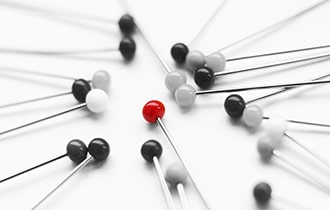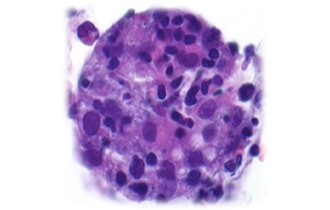Why Tumoroids are not tumor organoids
Over the last decade, many have sought to build on the discovery that tumor cells dissociated and separated from primary tumors could be propagated in vitro using various “patterning” factors such as growth factors in a 3D artificial matrix, in order to self-organise into 3D structures known as “organoids” owing to their abilities to self-renew and differentiate.
The success rate for establishing organoids varies tremendously between indications, for example >90% for CRC but < 20% for indications such as Prostate and NSCLC. It is important to also bear in mind that organoids are clones of individual or small groups of cells selected on the basis of their ability to propagate, which would infer “only the strong survive”. Whilst organoids can be propagated to produce large numbers for screening assays. It has been shown that organoid heterogeneity drifts with time. CRC organoids can reach clonality in 30-40 days, as particular oncogenic mutations provide some tumor cells with a competitive advantage.
Bottomline, organoids lack the full complement of cells and factors found in a patient’s tumor. Tumoroids, in comparison, are created directly from fresh patient tumor tissue and retain the full architecture of the tumor microenvironment (TME) and extracellular matrix (ECM). The importance of ECM when studying immune responsiveness in tumors cannot be overstressed. The TME is not just tumor cells, but immune cells, fibroblasts, signalling molecules, and the ECM. The ECM is a three-dimensional network of extracellular macromolecules such as collagen, enzymes and glycoproteins, where cell adhesion, cell-to-cell communication and differentiation occur frequently. Maintaining the TME during drug studies is essential to ensure therapeutic intervention is correctly modelled.
At Nilogen we have shown repeatedly how the dissociation of tumors, dramatically alters the compensatory environment which is largely responsible for affecting the true response of tumor tissue to immune modulatory agents such as checkpoint inhibitors1.
Tumoroids are being used today across the field of oncology drug studies to capture true response to conventional chemotherapeutic and targeted therapies, monoclonal antibodies, cellular therapies and oncolytic virus.
1. Agrawal V, Mediavilla-Varela M, Page MM, Kreahling J, Altiok S. Abstract 42: The importance of intact tumor immune microenvironment in unpropagated 3D fresh patient tumoroids in immune-oncology drug testing for immunogenic tumor cell death and T-cell activation. Proceedings of the American Association for Cancer Research Annual Meeting 2019; Atlanta, GA, USA. March 29 – April 3, 2019. Cancer Research. 2019; 79:13. DOI: 0.1158/1538-7445.AM2019-42

